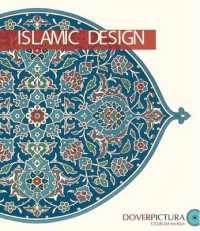Full Description
The Mexican aristocracy today is simultaneously an anachronism and a testimony to the persistence of social institutions. Shut out from political power by the democratization movements of the twentieth century, stripped of the basis of its great wealth by land reforms in the 1930s, the aristocracy nonetheless maintains a strong sense of group identity through the deeply held belief that their ancestors were the architects and rulers of Mexico for nearly four hundred years.
This expressive ethnography describes the transformation of the Mexican aristocracy from the onset of the Mexican Revolution of 1910, when the aristocracy was unquestionably Mexico's highest-ranking social class, until the end of the twentieth century, when it had almost ceased to function as a superordinate social group. Drawing on extensive interviews with group members, Nutini maps out the expressive aspects of aristocratic culture in such areas as perceptions of class and race, city and country living, education and professional occupations, political participation, religion, kinship, marriage and divorce, and social ranking. His findings explain why social elites persist even when they have lost their status as ruling and political classes and also illuminate the relationship between the aristocracy and Mexico's new political and economic plutocracy.
Contents
Preface
Introduction
Chapter 1. Demographic Composition and Contextual Definition of the Aristocracy
Chapter 2. The Relationship of Class and Ethnicity: Somatic and Racial Considerations
Chapter 3. The Realization of Expression in the Ethnographic Context
Chapter 4. The Organization of Urban Living: Settlement, Residence, and the Household
Chapter 5. Economy, Material Culture, and Political Participation
Chapter 6. Religion: Ideology, Worship, and the Ritual-Ceremonial Complex
Chapter 7. Social Organization: The Configuration and Interrelationship of Kinship Units and Institutions
Chapter 8. Internal Stratification and Organization of the Group
Conclusions
Notes
Glossaries
Bibliography







